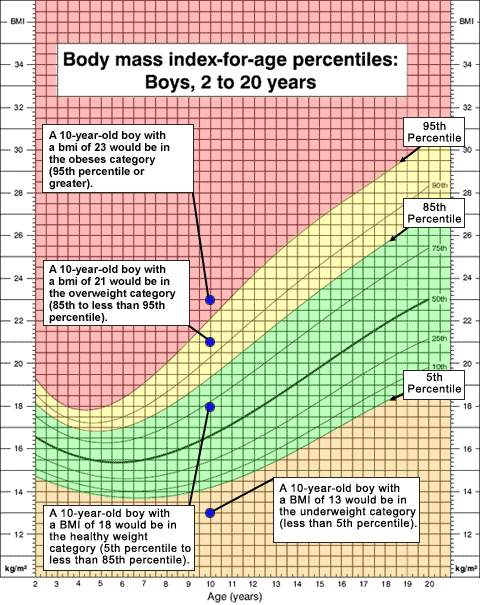BODY MASS INDEX (BMI)

For children over the age of 2 years, definitions for overweight and obesity are based on the Body Mass Index (BMI).
The BMI is calculated as follows:

A BMI calculator can be found at the following website: http://apps.nccd.cdc.gov/dnpabmi/
Using the BMI, overweight and obesity are defined as follows:
For Children and Adolescents:
- Underweight: BMI <5 th%
- Normal weight: BMI > 5th% and <85th%
- Overweight: BMI >85 th% and <95 th%
- Obesity: BMI >95 th%
- Severe (morbid) obesity: BMI >99 th%
Pediatricians must calculate and graph a child's BMI on a gender-specific chart at every well child visit starting at age 2 years.
The Centers for Disease Control (CDC) provides these graphs free of charge:
BMI graph for girls (2-20 years):
BMI graph for boys (2-20 years):
The following image shows how BMI would be used to determine the weight status of four different 10-year-old boys.


What should we do for children under the age of 2 years? Currently, there are no accepted cutoffs for BMI in this age group. Instead, you should plot children under the age of 2 on a weight-for-recumbent length graph. In children under the age of 2 years, overweight is defined as weight-for-recumbent length > 95%.
Weight for length graph for girls (birth to 36 months):
Weight for length graph for boys (birth to 36 months):
There are other definitions for overweight and obesity, and these definitions have changed over time. Currently, most pediatricians accept the definitions from the
Centers for Disease Control, but be aware that you may encounter others in the literature.